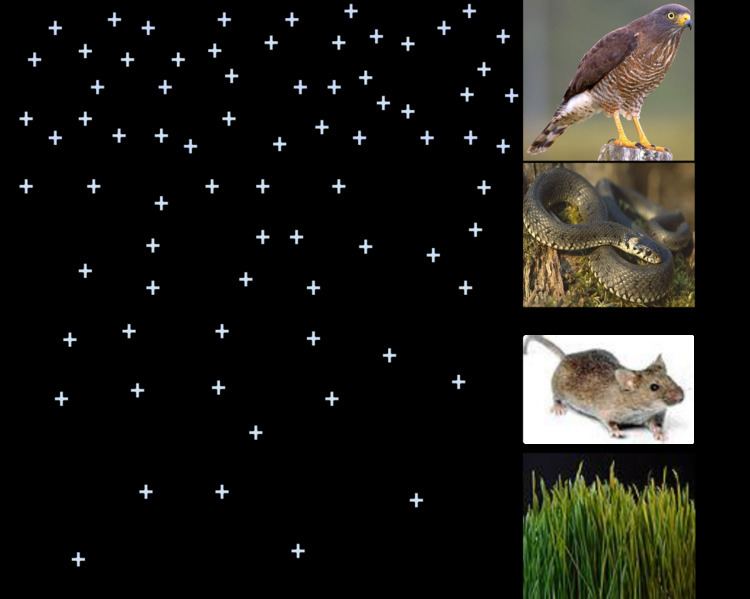 | ||
Biomagnification, also known as bioamplification or biological magnification, is the increasing concentration of a substance, such as a toxic chemical, in the tissues of organisms at successively higher levels in a food chain. This increase can occur as a result of:
Contents
Biological magnification often refers to the process whereby certain substances such as pesticides or heavy metals move up the food chain, work their way into rivers or lakes, and are eaten by aquatic organisms such as fish, which in turn are eaten by large birds, animals or humans. The substances become concentrated in tissues or internal organs as they move up the chain. Bioaccumulants are substances that increase in concentration in living organisms as they take in contaminated air, water, or food because the substances are very slowly metabolized or excreted.
The following is an example showing how bio-magnification takes place in nature: An anchovy eats zoo-plankton that have tiny amounts of mercury that the zoo-plankton has picked up from the water throughout the anchovies lifespan. A tuna eats many of these anchovies over its life, accumulating the mercury in each of those anchovies into its body. If the mercury stunts the growth of the anchovies, that tuna is required to eat more little fish to stay alive. Because there are more little fish being eaten, the mercury content is magnified.
Processes
Although sometimes used interchangeably with "bioaccumulation", an important distinction is drawn between the two, and with bioconcentration.
Thus, bioconcentration and bioaccumulation occur within an organism, and biomagnification occurs across trophic (food chain) levels.
Biodilution is also a process that occurs to all trophic levels in an aquatic environment; it is the opposite of biomagnification, thus a pollutant gets smaller in concentration as it progresses up a food web.
Lipid, (lipophilic) or fat soluble substances cannot be diluted, broken down, or excreted in urine, a water-based medium, and so accumulate in fatty tissues of an organism if the organism lacks enzymes to degrade them. When eaten by another organism, fats are absorbed in the gut, carrying the substance, which then accumulates in the fats of the predator. Since at each level of the food chain there is a lot of energy loss, a predator must consume many prey, including all of their lipophilic substances.
For example, though mercury is only present in small amounts in seawater, it is absorbed by algae (generally as methylmercury). It is efficiently absorbed, but only very slowly excreted by organisms. Bioaccumulation and bioconcentration result in buildup in the adipose tissue of successive trophic levels: zooplankton, small nekton, larger fish, etc. Anything which eats these fish also consumes the higher level of mercury the fish have accumulated. This process explains why predatory fish such as swordfish and sharks or birds like osprey and eagles have higher concentrations of mercury in their tissue than could be accounted for by direct exposure alone. For example, herring contains mercury at approximately 0.01 parts per million (ppm) and shark contains mercury at greater than 1 ppm.
DDT is thought to biomagnify and biomagnification is one of the most significant reasons it was deemed harmful to the environment by the EPA and other organizations. DDT is stored in the fat of animals and takes many years to break down, and as the fat is consumed by predators, the amounts of DDT biomagnify. DDT is now a banned substance in many parts of the world.
Current status
In a review of a large number of studies, Suedel et al. concluded that although biomagnification is probably more limited in occurrence than previously thought, there is good evidence that DDT, DDE, PCBs, toxaphene, and the organic forms of mercury and arsenic do biomagnify in nature. For other contaminants, bioconcentration and bioaccumulation account for their high concentrations in organism tissues. More recently, Gray reached a similar substances remaining in the organisms and not being diluted to non-threatening concentrations. The success of top predatory-bird recovery (bald eagles, peregrine falcons) in North America following the ban on DDT use in agriculture is testament to the importance of biomagnification.
Substances that biomagnify
There are two main groups of substances that biomagnify. Both are lipophilic and not easily degraded. Novel organic substances are not easily degraded because organisms lack previous exposure and have thus not evolved specific detoxification and excretion mechanisms, as there has been no selection pressure from them. These substances are consequently known as "persistent organic pollutants" or POPs.
Metals are not degradable because they are elements. Organisms, particularly those subject to naturally high levels of exposure to metals, have mechanisms to sequester and excrete metals. Problems arise when organisms are exposed to higher concentrations than usual, which they cannot excrete rapidly enough to prevent damage. Some persistent heavy metals are especially dangerous and harmful to the organism's reproductive system.
